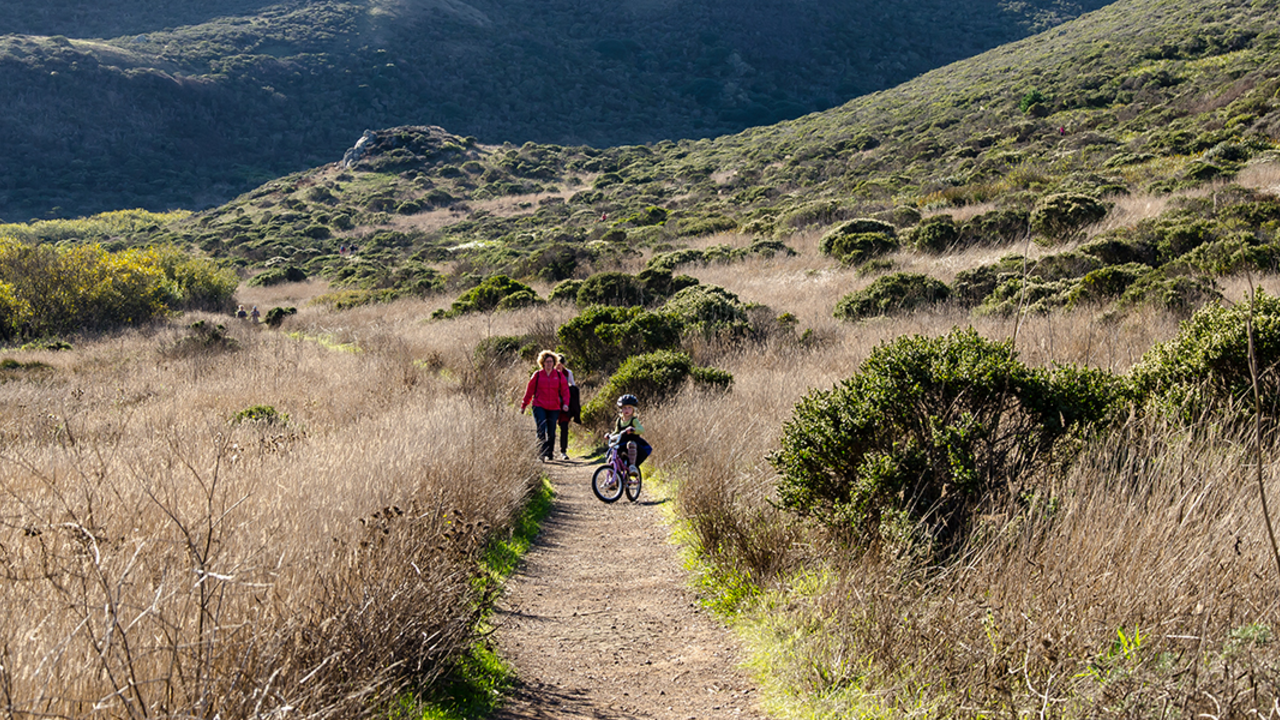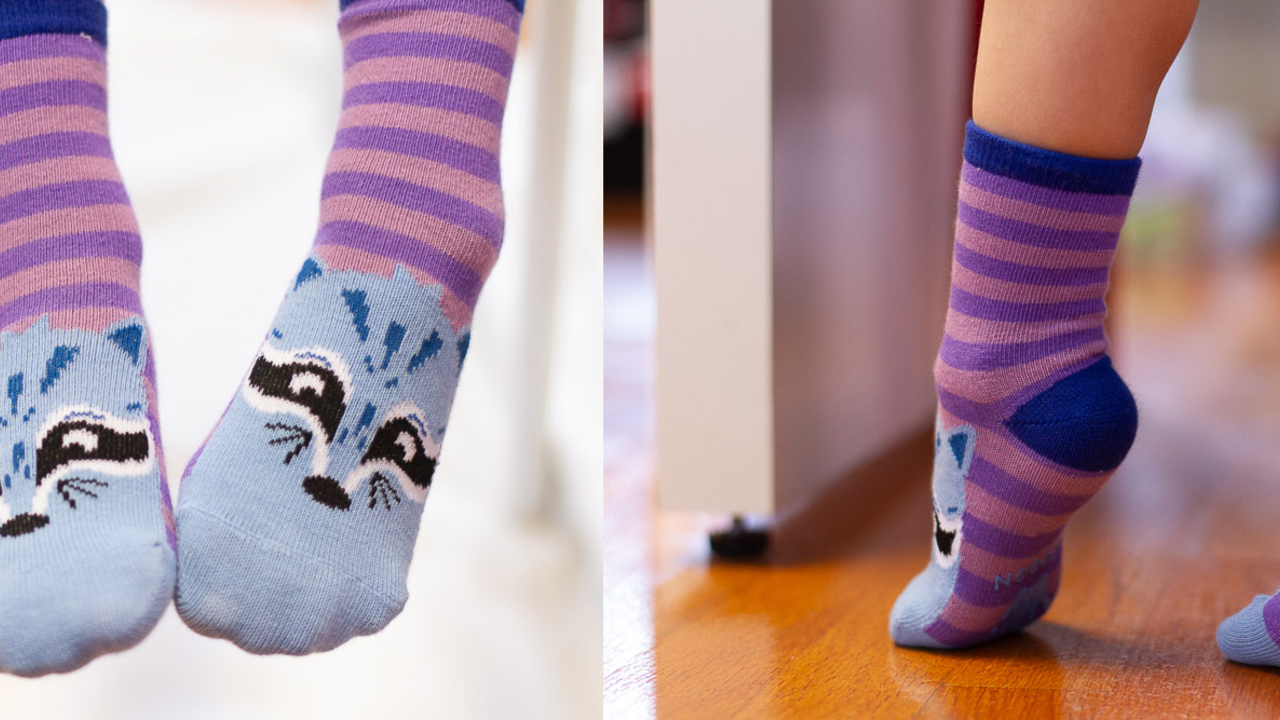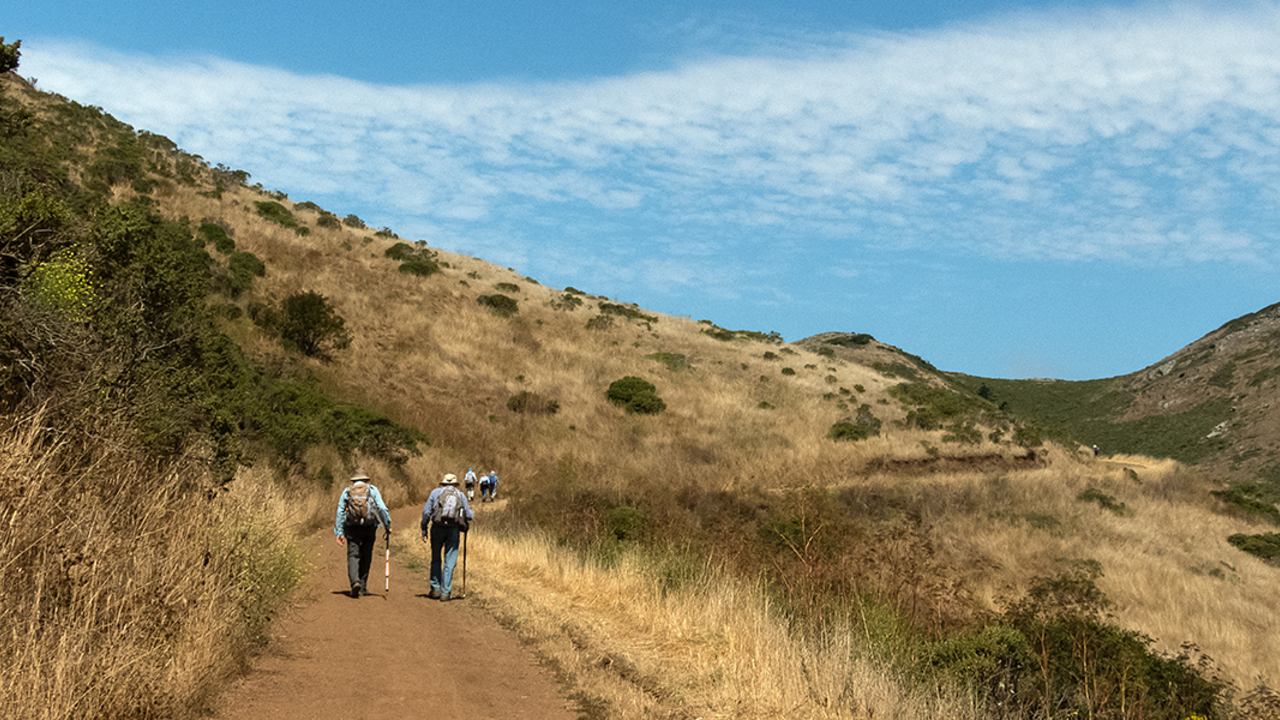Wildlife Encounter Tips

Kirke Wrench/National Park Service
We want you to have a howlingly good time in the Golden Gate National Parks, but we also want to protect the wildlife that howl (and those that don’t). The national parks in your backyard are teeming with wildlife, and it should be your mission to minimize your interactions with them.
Why? Because human visitors can change wildlife behavior and damage habitat. Like when animals become reliant on people as a food source. Also because wild animals are exactly that--wild animals, meaning their behavior is often unpredictable, and an encounter could land you in a risky situation.
General Wildlife Encounter Tips
Adhere to these basic guidelines to keep you safe...and save you from social media ridicule (no selfies with the mountain lion please):
- Never feed wildlife (don’t even think about feeding candy to that squirrel).
- Don’t be a buzz kill. Do not interfere with mating, predation, or other natural behavior.
- Keep a respectful distance (at least 10 feet) from wildlife. No Instagram shot is worth endangering an animal.
- Follow the “leave no trace” principles. Leave the outdoors better than you found it. Read more about the Leave No Trace principles.
And while most of those basic guidelines will help you in most situations, see the specialized advice for keeping yourself and your loved ones (including your doggo) safe while exploring your parklands.
Coyotes are our neighbors in the Golden Gate National Recreation Area. They have homes all around the parks, including Lands End and the Presidio. Usually timid creatures, coyotes that live in close proximity to humans can become more brazen and emboldened, especially when encountering a small child or dog.
Coyote interactions are more likely during certain times of the year. According to the Urban Coyote Initiative, “Coyotes mate in mid-February and are ready to give birth by mid-April. During this time, both when nearing birthing time and once the pups are born, coyote parents are more protective of their denning areas and more active in hunting food. Their level of activity and protectiveness rises even more as the pups begin to venture out of the den in early summer.”
If you come across a coyote and it doesn’t immediately bolt for safety (its most likely course of action), “haze” the coyote until it leaves the area. This includes:
- Make yourself look tall and be loud as possible. Don’t ever turn your back or turn to run.
- Clap your hands, wave your arms, and shout in a calm, authoritative voice.
- Last ditch effort: Hurl an object around you towards the coyote; don’t aim to hit it, a “warning shot” or two should suffice.
While some might view this behavior as abusive, most coyote advocates will tell you that scaring them away is the kindest thing you could do. According to the Urban Coyote Initiative: “Keeping up a coyote’s natural fear of humans is the only way to keep urban coyotes alive, for a coyote that becomes too brazen is sure to end up euthanized.”
In addition to rare attacks on humans, coyotes have been known to show aggression toward their domesticated distant relatives. Keep yourself and your pooch safe with these guidelines:
Keep your dog on a 6-foot leash.
- Avoid areas known to have coyote activity, especially during breeding and pupping season (spring/summer).
- Don’t detour off trails. Going off trail, following social trails, or heading into areas where there is thick brush lining the path increases your chances of running into a coyote. Staying on trail in open areas gives you plenty of time to spot and react to a coyote.
- Don’t walk your dog at sunrise and sunset hours. Coyotes are naturally active during the day, though urban coyotes usually switch to nocturnal behavior.
- Report overly brazen coyotes. If a coyote gets too close, follows you for too long, acts overly assertive, or does not respond to hazing, report the coyote to the National Park Service at the non-emergency dispatch number (415) 561-5505. If you’re in the Presidio, contact the Presidio Trust at (415) 561-4148 or coyote@presidiotrust.gov
Additional Resources
Here are some recomendations to increase your safety when hiking in mountain lion habitat:
- Make noise, be loud, and make your presence known. Sing, talk loudly, or wear a bell.
- Do not hike solo. Hike with groups, with adults watching any kids.
- Keep small dogs and children close to you. Keep your pets and kids within your line of sight at all times. Teach your kids what to do if they see a mountain lion.
- Hike during daylight hours and stay on established trails.
- Get the rare chance to see one from a safe distance? Though the cougar is likely to leave the area, you should group together and hike with caution.
In the extremely rare case that you encounter a mountain lion:
- Stay calm and maintain eye contact. Hold your ground or back away slowly. Face the lion and stand upright.
- Do not approach a lion. Always give them a way to escape. Never approach a mountain lion—especially one that is feeding or with kittens. Most mountain lions will try to avoid a confrontation.
- Do not turn your back or run from a lion. Running may stimulate a mountain lion's instinct to chase. Instead, stand and face the animal. Make eye contact. If you have small children with you, pick them up if possible so they don't panic and run.
- Do not crouch down or bend over. If you're in mountain lion habitat, avoid squatting, crouching, or bending over, even when picking up children or pets. Maintain an upright posture to signal that you’re a human!
- Band together. Hiking with a group? Ask your peers to circle up and keep an eye out for each other.
- Assess the situation and slowly create distance. As the Mountain Lion Foundation notes in their safety tips, "Consider whether you may be between the lion and its kittens, prey or cache. Back away slowly to give the mountain lion a path to retreat, never turning your back. Give the lion the time and ability to get away."
If the mountain lion exhibits threatening or aggressive behavior:
- Do all you can to appear intimidating. Attempt to appear larger by raising your arms and opening your jacket if you are wearing one. Wave your arms slowly and speak firmly in a loud voice.
- Throw rocks, sticks, water bottles, backpacks, and any heavy object available to you. If looking bigger doesn't scare the mountain lion off, use whatever tools you have within reach to convince the mountain lion that you are not prey and that you may be a danger to it. Again, be sure to give the lion an escape route.
If the mountain lion continues to move in your direction:
- Start throwing things at it. Your safety is more important than the mountain lion's.
If the mountain lion attacks you:
- Fight back! Do not play dead or lie down. Since a mountain lion usually tries to bite the head or neck, try to remain standing and face the attacking animal.
Report a Sighting
Please report any suspected mountain lion sighting immediately using the contact information below. Early reporting assists us in our efforts to respond in coordination with California Fish and Wildlife.
San Francisco Animal Care and Control Emergency Dispatch at (415) 554-9400 or 311
Presidio Wildlife Hotline at (415) 561- 4148
Bears occasionally are spotted in our coastal parklands. Visit the National Park Service website to learn how to hike in bear country and how to react if a bear approaches you.
How to Avoid Rattlesnakes
- Walk or hike in areas where the ground is clear, so you can see where you step or reach with your hands.
- If you think you hear a rattlesnake, stand still until you’ve located the snake, then move away.
- Don’t rely on hearing a rattle-–baby rattlesnakes don’t have a rattle but are just as venomous and adult snakes’ rattles can break off.
- Wear protective clothing such as long heavy pants and high boots.
- Wear gloves when using your hands to move rocks or brush.
- Watch where you step, and never put your hands in areas where you cannot see.
- Ledges, cracks or holes are common areas where rattlesnakes can be found resting.
If you Encounter a Rattlesnake
- Keep your distance--rattlesnakes can strike only a distance equal to half their own length.
- Watch where you step or reach with your hands.
- Stand still if you think you hear a snake, until you’ve located the snake; then move away.
- Beware of snakes without a rattle–baby rattlesnakes don’t have rattles and adult rattles can break off.
If a Bite Occurs
- All rattlesnake bites are a medical emergency. Victims should seek medical attention in an emergency room immediately!
- Try to calm the victim
- Determine if a dry-bite occurred (with no venom injected) by assessing pain, swelling and muscle twitching. Those symptoms will occur if venom has been injected.
- Immobilize and gently wash the bite area with soap and water and keep it lower than the heart.
- If possible, stay put to avoid moving the muscle, which would spread the venom.
- Mark the area of the swelling with a pen with the time on it.
- Remove any watches, jewelry, etc. that might constrict swelling.
- Apply a cold, wet cloth over the bit if possible.
- Transport safely to the nearest emergency facility for further treatment (for anti-venom to be administered). If a victim is unable to reach medical care within 30 minutes, a bandage, wrapped two to four inches above the bite may help slow venom. The bandage should not cut off blood flow from a vein or artery. A good rule of thumb is to make the band loose enough that a finger can slip under it.
What to Avoid if a Bit Occurs
There are several things you should NOT do if bitten by a snake:
- DON'T apply a tourniquet
- DON'T pack the bite area in ice or ice water
- DON'T cut the wound with a knife or razor
- DON'T suck out the venom by mouth as infection can occur (avoid the common Sawyer Extractor)
- DON'T let the victim drink alcohol
Ticks are external parasites that feed on the blood of vertebrate species (mammals, birds, reptiles and amphibians) and can cause a range of illnesses in both humans and animals. They can carry Lyme disease and other diseases.
Prevention
- Learn more about whether you live, work, or are traveling in an area of risk. The CDC has some information, but additional information may be available through your local or state health department website.
- Wear protective clothing and footwear. This may include wearing long sleeves and long pants, tucking pants into socks, and wearing a hat or cap.
- Hike in the center of trails to avoid brushing up against vegetation and avoid sitting on logs.
- Wear light-colored clothes so you can easily spot ticks.
- Use repellent: This EPA resource can help you find the repellent that is right for you.
- Treat clothing and gear with permethrin.
- Perform tick checks. Check your body for ticks after being outdoors (especially under the arms, in and around the ears, inside the belly button, back of the knees, in and around the hair, between the legs, and around the waist). Check your clothing (including shoelaces) and gear. Check your pets.
- Shower soon after spending time in tick habitat.
- Put clothing on high in the dryer for at least 10 minutes to kill ticks.
- Prepare and utilize a tick kit: a small first-aid kit that contains everything you need to prevent or remove ticks. Components of a tick kit may include: DEET or another EPA-approved repellent, Permethrin (0.5%) to apply to shoes and clothing, tweezers to remove an embedded tick, rubbing alcohol or soap and water to clean skin after removing tick, and mirrors for employees to inspect themselves for ticks.
Response
- Remove ticks safely using tweezers and pulling upward with steady pressure. Do not twist the tick or try to remove it without a tool. Clean the tick bite area thoroughly and consider keeping the tick in a sealed bag/container for possible future identification or submission.
- Seek medical attention if you observe any symptoms of tickborne illness. It’s important to communicate the tick bite exposure and timing of symptoms to your medical provider and discuss tick bite prophylaxis or treatment options.
A few more important things to note:
- A tick must be biting the skin for at least 24 hours to transmit Lyme disease.
- It’s important to also check your dogs and consider keeping your pooch on a preventative tick treatment
- Never crush a tick with your fingers. Dispose of a live tick by:
- Putting it in alcohol
- Placing it in a sealed bag/container
- Wrapping it tightly in tape
- Flushing it down the toilet
- Be mindful of putting bags or backpacks down in tick areas, they can crawl onto your gear and onto you!
- If you want to get a tick tested for Lyme disease, refer to this resource page.






